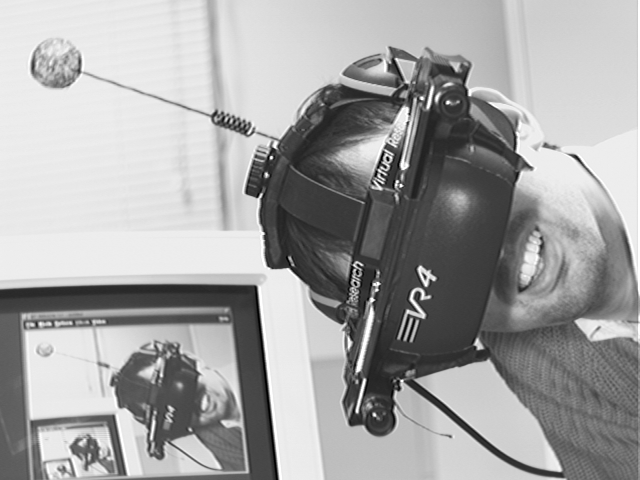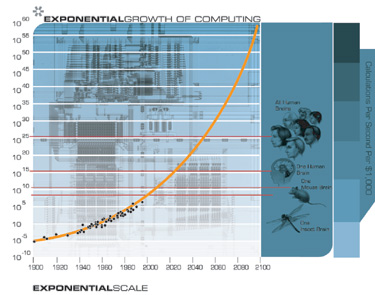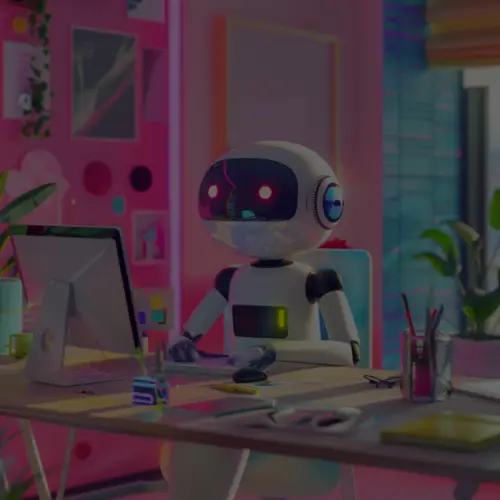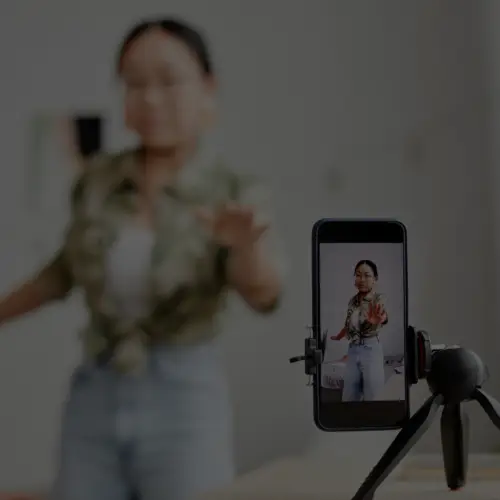21 May Our Evolving Relationship with Technology and Social Media
Back in August, I wrote a blog post which alluded to a shift from mobile phones to augmented reality vision. Since then, Google announced they are working on just that with “Project Glass.” This new technology is well on its way to not only change how we interact with each other, but our relationship with technology and how we process data as well. In this post, I’m going to start off with an example of augmented reality, the issues it presents, our relationship with technology, how the combined concepts reflect a need for “Calm Technology,” and the implications of these concepts on the future of social media and marketing. Warning: this post is long so if you’re hurting for time just skip down to the bottom TL;DR (Too Long; Didn’t Read) section for an extremely brief summary.
Practical Applications of Augmented Reality

While Google’s HUD glasses may not make the technology mainstream, the concept of wearable augmented reality devices is definitely the next step after mobile, and it’s a long time coming — Steve Mann has been working with the technology for decades. There is tremendous value in seeing the world through an augmented lens; something the military thinks is valuable enough to warrant developing augmented reality contacts.
Take, for example, the concept of SXSW app darling Highlight, which shows you a person’s name, photos, mutual friends, and anything else they have chosen to share with you on your smartphone — just by being near them. Put that into an augmented reality context and maybe throw in a little bit of Facebook’s facial recognition to make it extra creepy. The next thing you know, you’re talking to a new person and your glasses pull up information about him, such as what TV shows he likes, where he works, and if you’ve met him before. Awkward situation avoided!
Another scenario could be using a navigation program while driving as your glasses display arrows on the road so you don’t miss a turn. Or maybe you’re walking by a restaurant and reviews that your friends have left pop up in your sight, letting you know that the chocolate cake is absolutely superb. Mmm, cake. There is criticism that this type of technology will cause issues with distraction as it’s not a natural way to look at the world, which is why I think the technology will evolve to be a bit more subtle (more on that later).
The Problem of Distraction, Solved by Automation
 I absolutely love technology and the innovations that have come with smartphones, but sometimes we can get too involved with our mobile devices and forget to enjoy the world around us. While some might argue wearable augmented reality devices might cause even more distractions, I think it will provide the bridge to the next phase of how we use technology in our everyday lives. We’re still using training wheels because riding a bike just isn’t natural to us yet and we’re preoccupied with all of the shiny bells and streamers. Augmented reality is just one of the next steps in the evolution of technology that will lead us to a point of more natural device interaction.
I absolutely love technology and the innovations that have come with smartphones, but sometimes we can get too involved with our mobile devices and forget to enjoy the world around us. While some might argue wearable augmented reality devices might cause even more distractions, I think it will provide the bridge to the next phase of how we use technology in our everyday lives. We’re still using training wheels because riding a bike just isn’t natural to us yet and we’re preoccupied with all of the shiny bells and streamers. Augmented reality is just one of the next steps in the evolution of technology that will lead us to a point of more natural device interaction.
Automation services like ifttt are a step in the direction of helping us manage our countless services. Why should you have to manually record things that you do and like? If I finish reading a book, it would be great if it automatically updated my Goodreads account so I could spend the extra 5 seconds I just earned on figuring out what to read next. Five seconds may not seem like a lot of time, but in a culture where something is outdated as soon as it comes out, that 5 seconds is quite valuable. During his keynote at SXSW, author of The Singularity is Near, Ray Kurzweil said “In the future, search engines won’t wait to ask, they will already be listening with your permission,” noting the progression of AI and the ability for a machine to know you so well it can essentially be an extension of your brain (Google’s new “Knowledge Graph” is just the beginning). All of this ultimately leads up to the greater concept of ‘Calm Technology,’ or technology that provides the user with information without distracting focus.
Ubiquitous Computing, Calm Technology and its Implications on Social Media
In a paper titled “The Coming Age of Calm Technology” Mark Weiser and John Seely Brown introduced the concept of calm technology as “a new approach to fitting technology to our lives” in the era of ubiquitous computing (“deeply embedding computation in the world,” or essentially lots of tiny computers embedded in sharing users). The paper suggests that as technology transitions from a focus on personal computing to ubiquitous computing, computers and programs will need to be designed in the interest of promoting tranquility of use and allowing the users to naturally feel in control by making proper use of serving information to the center of a user’s focus or the periphery (depending on the context). Wiser and Brown conclude in their paper that:
“It seems almost nonsensical to say that the way to become attuned to more information is to attend to it less. It is these apparently bizarre features that may account for why so few designs properly take into account center and periphery to achieve an increased sense of locatedness. But such designs are crucial. Once we are located in a world, the door is opened to social interactions among shared things in that world. As we learn to design calm technology, we will enrich not only our space of artifacts, but also our opportunities for being with other people. Thus may design of calm technology come to play a central role in a more humanly empowered twenty-first century.”
This next decade is going to bring success to those who can market and distribute information in a manner that exists in the periphery. Social networks will not only know you better, they will adapt to the environment you are in and present information in a way that doesn’t require you to be glued to your computer or smartphone. Developers will need to take into consideration, not just design, but contextual placement that allows users to feel in control of the information in a way that is as natural (to us now) as a light switch. Information needs to be successfully delivered without effectively distracting the user from their current task. Marketers will need to be cognizant of the importance of balancing the periphery and center of one’s attention to improve the effectiveness of the message without distracting or deterring the audience.
Ubiquitous computing is in its infancy, but we are increasingly surrounded by smart devices embedded into our everyday life. Imagine a refrigerator connected to software that links your social accounts to understand your culinary preferences, as well as recommendations from friends. Instead of an alert on your social profile, maybe the program passes on the information of your friend’s recommendation to a suggested grocery list. Or, say there’s a brand you like and, instead of monitoring a stream of updates for new beverages to try, an ad service is developed to allow brands to send grocery list recommendations to the fridge via the network. Instead of looking up recipes for dinner on your tablet, maybe your counter has a display that talks to your fridge and produces recommendations based on its contents along with tips your friends have made about how delicious those cookies are if you substitute the sugar with honey.
In Summary
Augmented reality glasses are continued proof of the fast-paced evolution of how we digest content and interact with devices. In the past few decades, we have moved from using a mouse and keyboard as our primary form of controlling devices limited to staying on a desk to more-natural touch interfaces that have since allowed a deeper interaction with our surroundings. As these trends continue to enforce the notion that our devices are an extension of ourselves, the amount of information we receive will continue to grow exponentially. In order to maintain control over the increasing wealth of information, new software, devices, and marketing strategies will need to develop calming experiences by allowing the user to feel in tune with and in control of the information as it contextually relates to the user’s environment.
TL;DR (Too Long; Didn’t Read)
In order to prevent our brains from exploding due to information overload, the future of successful technology will lie with services that can calmly, but effectively, deliver this wealth of information to users’ environments. And Skynet will soon be live.
Images sourced from wearcam.org and kurzweilai.net.






